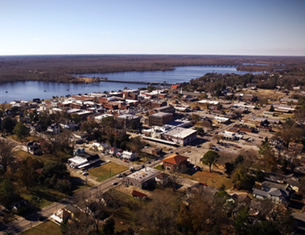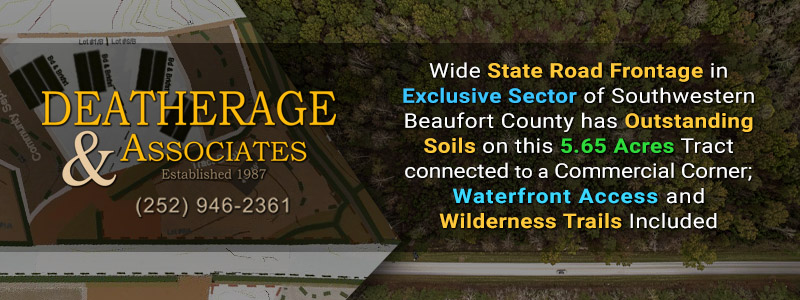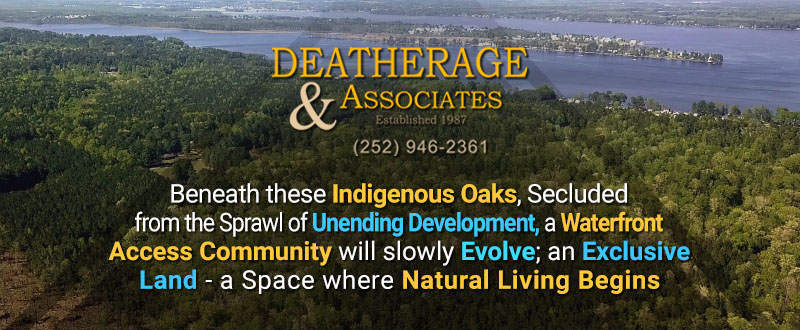Your Public Square Disclosing what is True, what is Real
Press Briefing by Vice President Pence and Members of the Coronavirus Task Force | November 19, 2020
The next slide really shows the country as a whole and why we're asking every American to remain vigilant, to do those things that we have been asking you all to do: to wear a mask, to physically distance, to continue your hand hygiene, but really, in this moment of bringing people together, to really limit interactions indoors to immediate households when we see this level of community spread.
Behind this level of community spread is a lot of asymptomatic cases. People are spreading the virus because they don't know they're infected with the virus, and so people are coming together indoors. Everyone looks healthy, but among those individuals could be individuals that already are infected, have no symptoms, and are unknowingly spreading the virus to others.
It is because of this asymptomatic spread that we have asked people to wear a mask indoors and to ask people to wear a mask when among others. But sometimes when we go indoors and we're with friends and family, we just assume that if you look okay, you are okay. And now we know that over 50 percent of the individuals, particularly among those under 35, many could be infected and unknowingly spreading the virus.
This virus increased so rapidly because there was an unusual cold snap that began in the Northern Plains and went down through the Heartland where, in the end of September/ beginning of October, large number of people moved indoors. So we've been going across the country to really tell them that, in the Mid-Atlantic states and the Northeast, to really increase testing, looking for these asymptomatic cases.
And I really want to thank the governors across this great land who have really heeded that call and set up what we call sentinel populations - whether it's nursing home staff, K-through-12 teachers; whether it's community college students, county workers, specific businesses - to really have routine weekly testing so that we can see the spread of this virus down to the zip code and really combat that with additional mitigation.
The next slide shows what we have been talking about, about the level of hospitalizations. And in this slide you can see the hospitalizations by the darkness of the color. And I just want to make it clear what the Vice President talked about: We now can see every admission every day. And I want to thank the hospitals who, from July, have been sending us that data and improving that data, and working with CDC so that we can see new admissions, we can see inpatient status, we can see CCU - ICU status, and we can see who's being admitted by age group. Right now, it's about 50/50 between those between 40 and 69 and those over 70.
But you can see that we have some areas of the country in the hot red, bright pink. And these are - the darkest red are those states that have more than 21 percent of their hospitals are COVID patients, and the light pink is between 16 and 20 percent, and the light orange between 12 and 15 percent.
But you do see that there's still states in the green areas. And to all of those states that have not seen this surge: to really increase your testing among asymptomatics by setting up these sentinel populations.
When we did the 45 days to stop the spread and we asked each state to follow the gating criteria, part of that gating criteria included looking for asymptomatic cases. With these new antigen tests, we have the capacity to really expand testing to find those cases and stop that spread.
In the meantime, as we started with, we stopped the surge in the south through very targeted mitigations that start with masks, that start with physical distancing, but also include decreasing those friends and family gatherings where people come together and unknowingly spread the virus.
And I want to thank the mayors of Miami - Miami City and Miami County - who - they were the ones that first, in the summer, really found how much asymptomatic spread was occurring in household gatherings.
And so, as you bring together individuals, remember what the Vice President talked about: Every American needs to be vigilant in this moment because we know that when you are, we can mitigate this virus and stop this spread together.
THE VICE PRESIDENT: Great. Thank you, Dr. Birx. And as you can see, with particularity on a state-by-state basis, we are - want the American people to know that we have - we have eyes on your local hospital. We know about admissions. We know about the availability of ICU beds. And we know about supplies.
And from very early on, at the President's direction, we stood up the greatest national mobilization since World War Two. And I want the American people to know that that continues to this moment.
And General David Sanford, who has been with us every step of the way, is going to brief you on the status of our supply chain and the reserves that we have in our ongoing efforts to make sure that our hospitals and healthcare facilities have the resources and the support to meet this moment.
General?
BRIGADIER GENERAL SANFORD: Mr. Vice President, thank you, sir. Dr. Birx, thank you, ma'am. So we are in a much better place and continue to improve upon that capability. You'll see from the slides behind me that we have - continue to grow our National Stockpile but also our FEMA stocks to meet the requirements laid out by our states and by our populations. We continue to expand upon these to bridge the vaccine delivery to continue to protect our American population.
Since the late summer, we have grown our personal protective equipment capabilities 10 to 15 times over what they were pre-COVID and continue to grow capability to meet the surge requirements that we may expect from the current caseload.
As you can see behind me, around the third column or fourth column, we have four months of surge capability based on current case diagnosis just for N95 masks. And we continue to grow that capability - more masks being added every month.
The Strategic National Stockpile and our FEMA stocks are ready to be the backstop when our states require assistance. And that's all built upon a foundation of a strong, domestic medical industrial base - something where we've been able to expand upon or build, in some cases almost from scratch, using our Defense Production Act and other CARES Act authorities to provide the capabilities for our American people not just now, but into the future and for future crisis or medical events going down.
You can go to next slide, please.
This is not done alone. We continue to work with our states on a recurring basis. Our FEMA administrator is constantly engaged with the governors or their staffs. We reached out to both our regional administrators, to the state medical - or health department officials, and both to the emergency management officials in the state to find out what their needs are to help overcome their challenges and to grow the states' stockpiles, as that relates to our Federal Emergency Management mandate of local execution, state management, and federal support.
As you saw in the previous slide and as you'll see on this color-coded map, between our states and the federal government, we stand in a much better position than we were just a month ago, and certainly more than four or five months ago, to meet the surging PPE demands of our nation.
And this is not something that we're sitting and continuing just to watch; it is something that we're continuing to grow upon and to continuously analyze so that we can stay ahead of the increases and make sure that we're either procuring and we have PPE on the way to meet the surge in cases.
I'll turn it over to Dr. Fauci and General Perna.
THE VICE PRESIDENT: Great. Well done. Well done.
With that, I'm going to invite Dr. Tony Fauci to come up and share his thoughts on the development of a vaccine, which is giving such great hope. But I trust that the panels that you just showed us encourage the American people to know that we're going to continue to work around the clock to make sure your local hospital has the resources and the supplies that you need to meet this moment.
But I think we all know that we ultimately put this pandemic in the past the day that we have a safe and effective vaccine. And we've been making historic progress through Operation Warp Speed, with our private partners, and Dr. Tony Fauci and NIH have been absolutely integral to that.
So I've asked Dr. Fauci to update you on the status of vaccine development. And then - and then we will have General Gus Perna, who is coordinating the distribution plan for Operation Warp Speed, working with every state and territory in America to be ready on day one to distribute vaccines as soon as they're available, to give you a brief outline on that plan.
So, Dr. Fauci.
DR. FAUCI: Thank you very much, Mr. Vice President. As I was sitting there, I was recalling that, about seven or eight months ago, I stood at this exact spot at a time when there was really an extraordinary surge in cases in the northeastern part of the country, in New York City. And I said that, if the virus was left to its own devices, it would cause a considerable degree of devastation because that's what pandemic viruses do. It's a very powerful force, and you've heard about that and what we need to do about it from Dr. Birx.
However, I also said, if some of you can remember, that there's an opposing force to that, and that opposing force is us: you and I being able to do certain things, like mitigation with public health measures, again, which was just mentioned by Dr. Birx.
But there's another opposing force to that, and that's a vaccine. And historically, if you look at highly efficacious and effective vaccines through the years, they've crushed formidable outbreaks like smallpox, like polio, like measles. So in the next couple of minutes, let me tell you about what we have now and what's going to happen in the next few months.
As you well know, Operation Warp Speed has been supporting directly and indirectly six candidate vaccines, four of which are either in or completed phase three clinical trial. I want to briefly tell you about two of them because you have to be interested in this. It is extraordinarily impressive.
Two of the vaccines, one by Moderna and one by the company Pfizer, have completed trials, and the efficacious - vaccine efficacy point is extraordinary. With regard to Pfizer, it was 95 percent efficacious not only against disease that's just clinically recognizable disease, but severe disease. There were 10 cases of severe disease: one in the vaccine, nine in the placebo. For the Moderna trial, it was 94.5 percent efficacious. Eleven severe events: zero in the vaccine, 11 in the placebo.
For those of you not acquainted with the field of vaccinology, that is extraordinary. That is almost to the level of what we see with measles, which is 98 percent effective. So that's what we're dealing with.
The question is: What about how that is going to be rolled out? I use the word "efficacious"; that means what happens in a clinical trial. The word "effective" means is what the ultimate impact of that vaccine is going to be on society, and the only way you can get an effective program is when people take the vaccine. And we're going to be talking to you about that.
Go Back
Behind this level of community spread is a lot of asymptomatic cases. People are spreading the virus because they don't know they're infected with the virus, and so people are coming together indoors. Everyone looks healthy, but among those individuals could be individuals that already are infected, have no symptoms, and are unknowingly spreading the virus to others.
It is because of this asymptomatic spread that we have asked people to wear a mask indoors and to ask people to wear a mask when among others. But sometimes when we go indoors and we're with friends and family, we just assume that if you look okay, you are okay. And now we know that over 50 percent of the individuals, particularly among those under 35, many could be infected and unknowingly spreading the virus.
This virus increased so rapidly because there was an unusual cold snap that began in the Northern Plains and went down through the Heartland where, in the end of September/ beginning of October, large number of people moved indoors. So we've been going across the country to really tell them that, in the Mid-Atlantic states and the Northeast, to really increase testing, looking for these asymptomatic cases.
And I really want to thank the governors across this great land who have really heeded that call and set up what we call sentinel populations - whether it's nursing home staff, K-through-12 teachers; whether it's community college students, county workers, specific businesses - to really have routine weekly testing so that we can see the spread of this virus down to the zip code and really combat that with additional mitigation.
The next slide shows what we have been talking about, about the level of hospitalizations. And in this slide you can see the hospitalizations by the darkness of the color. And I just want to make it clear what the Vice President talked about: We now can see every admission every day. And I want to thank the hospitals who, from July, have been sending us that data and improving that data, and working with CDC so that we can see new admissions, we can see inpatient status, we can see CCU - ICU status, and we can see who's being admitted by age group. Right now, it's about 50/50 between those between 40 and 69 and those over 70.
But you can see that we have some areas of the country in the hot red, bright pink. And these are - the darkest red are those states that have more than 21 percent of their hospitals are COVID patients, and the light pink is between 16 and 20 percent, and the light orange between 12 and 15 percent.
But you do see that there's still states in the green areas. And to all of those states that have not seen this surge: to really increase your testing among asymptomatics by setting up these sentinel populations.
When we did the 45 days to stop the spread and we asked each state to follow the gating criteria, part of that gating criteria included looking for asymptomatic cases. With these new antigen tests, we have the capacity to really expand testing to find those cases and stop that spread.
In the meantime, as we started with, we stopped the surge in the south through very targeted mitigations that start with masks, that start with physical distancing, but also include decreasing those friends and family gatherings where people come together and unknowingly spread the virus.
And I want to thank the mayors of Miami - Miami City and Miami County - who - they were the ones that first, in the summer, really found how much asymptomatic spread was occurring in household gatherings.
And so, as you bring together individuals, remember what the Vice President talked about: Every American needs to be vigilant in this moment because we know that when you are, we can mitigate this virus and stop this spread together.
THE VICE PRESIDENT: Great. Thank you, Dr. Birx. And as you can see, with particularity on a state-by-state basis, we are - want the American people to know that we have - we have eyes on your local hospital. We know about admissions. We know about the availability of ICU beds. And we know about supplies.
And from very early on, at the President's direction, we stood up the greatest national mobilization since World War Two. And I want the American people to know that that continues to this moment.
And General David Sanford, who has been with us every step of the way, is going to brief you on the status of our supply chain and the reserves that we have in our ongoing efforts to make sure that our hospitals and healthcare facilities have the resources and the support to meet this moment.
General?
BRIGADIER GENERAL SANFORD: Mr. Vice President, thank you, sir. Dr. Birx, thank you, ma'am. So we are in a much better place and continue to improve upon that capability. You'll see from the slides behind me that we have - continue to grow our National Stockpile but also our FEMA stocks to meet the requirements laid out by our states and by our populations. We continue to expand upon these to bridge the vaccine delivery to continue to protect our American population.
Since the late summer, we have grown our personal protective equipment capabilities 10 to 15 times over what they were pre-COVID and continue to grow capability to meet the surge requirements that we may expect from the current caseload.
As you can see behind me, around the third column or fourth column, we have four months of surge capability based on current case diagnosis just for N95 masks. And we continue to grow that capability - more masks being added every month.
The Strategic National Stockpile and our FEMA stocks are ready to be the backstop when our states require assistance. And that's all built upon a foundation of a strong, domestic medical industrial base - something where we've been able to expand upon or build, in some cases almost from scratch, using our Defense Production Act and other CARES Act authorities to provide the capabilities for our American people not just now, but into the future and for future crisis or medical events going down.
You can go to next slide, please.
This is not done alone. We continue to work with our states on a recurring basis. Our FEMA administrator is constantly engaged with the governors or their staffs. We reached out to both our regional administrators, to the state medical - or health department officials, and both to the emergency management officials in the state to find out what their needs are to help overcome their challenges and to grow the states' stockpiles, as that relates to our Federal Emergency Management mandate of local execution, state management, and federal support.
As you saw in the previous slide and as you'll see on this color-coded map, between our states and the federal government, we stand in a much better position than we were just a month ago, and certainly more than four or five months ago, to meet the surging PPE demands of our nation.
And this is not something that we're sitting and continuing just to watch; it is something that we're continuing to grow upon and to continuously analyze so that we can stay ahead of the increases and make sure that we're either procuring and we have PPE on the way to meet the surge in cases.
I'll turn it over to Dr. Fauci and General Perna.
THE VICE PRESIDENT: Great. Well done. Well done.
With that, I'm going to invite Dr. Tony Fauci to come up and share his thoughts on the development of a vaccine, which is giving such great hope. But I trust that the panels that you just showed us encourage the American people to know that we're going to continue to work around the clock to make sure your local hospital has the resources and the supplies that you need to meet this moment.
But I think we all know that we ultimately put this pandemic in the past the day that we have a safe and effective vaccine. And we've been making historic progress through Operation Warp Speed, with our private partners, and Dr. Tony Fauci and NIH have been absolutely integral to that.
So I've asked Dr. Fauci to update you on the status of vaccine development. And then - and then we will have General Gus Perna, who is coordinating the distribution plan for Operation Warp Speed, working with every state and territory in America to be ready on day one to distribute vaccines as soon as they're available, to give you a brief outline on that plan.
So, Dr. Fauci.
DR. FAUCI: Thank you very much, Mr. Vice President. As I was sitting there, I was recalling that, about seven or eight months ago, I stood at this exact spot at a time when there was really an extraordinary surge in cases in the northeastern part of the country, in New York City. And I said that, if the virus was left to its own devices, it would cause a considerable degree of devastation because that's what pandemic viruses do. It's a very powerful force, and you've heard about that and what we need to do about it from Dr. Birx.
However, I also said, if some of you can remember, that there's an opposing force to that, and that opposing force is us: you and I being able to do certain things, like mitigation with public health measures, again, which was just mentioned by Dr. Birx.
But there's another opposing force to that, and that's a vaccine. And historically, if you look at highly efficacious and effective vaccines through the years, they've crushed formidable outbreaks like smallpox, like polio, like measles. So in the next couple of minutes, let me tell you about what we have now and what's going to happen in the next few months.
As you well know, Operation Warp Speed has been supporting directly and indirectly six candidate vaccines, four of which are either in or completed phase three clinical trial. I want to briefly tell you about two of them because you have to be interested in this. It is extraordinarily impressive.
Two of the vaccines, one by Moderna and one by the company Pfizer, have completed trials, and the efficacious - vaccine efficacy point is extraordinary. With regard to Pfizer, it was 95 percent efficacious not only against disease that's just clinically recognizable disease, but severe disease. There were 10 cases of severe disease: one in the vaccine, nine in the placebo. For the Moderna trial, it was 94.5 percent efficacious. Eleven severe events: zero in the vaccine, 11 in the placebo.
For those of you not acquainted with the field of vaccinology, that is extraordinary. That is almost to the level of what we see with measles, which is 98 percent effective. So that's what we're dealing with.
The question is: What about how that is going to be rolled out? I use the word "efficacious"; that means what happens in a clinical trial. The word "effective" means is what the ultimate impact of that vaccine is going to be on society, and the only way you can get an effective program is when people take the vaccine. And we're going to be talking to you about that.
| Beaufort County Emergency Management: COVID-19 Update (11-23-20) | News Services, Government, State and Federal | Beaufort County Emergency Management: COVID-19 Update (11-24-20) |

























